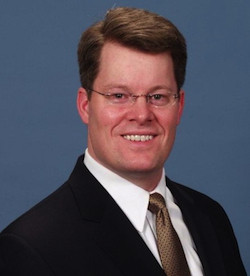Traders interested in far-flung markets tend to have shorter-term holding periods and comparatively modest order sizes, so the fastest route from point A to B is of paramount importance.
For trading applications, microwave is emerging as a viable alternative to fiber as a medium of choice, and data centers are embracing both.
Developers say microwave holds considerable promise as an emerging low latency technology, but its complexity is a level beyond fiber.
“Data center operators need to ensure that their customers have a broad selection of connectivity options and methods,” said Craig Mohan, managing director of co-location, data center services, at exchange operator CME Group.
Historically, that meant having redundant entrance facilities, inner duct, fiber, carrier services and paths within the building.
“With microwave, that extends to physical space on the property as well as frequency utilization near the building,” said Mohan. “As microwave grows in popularity, the area the data center needs to monitor is moving from its property to a radius of at least a couple of miles.”
While there are still bandwidth limitations associated with microwave, and it isn’t viewed as replacing fiber networks for bigger market data traffic, it does present a low latency alternative for order routing.

Kevin Ressler, director of global product management, enterprise networks, TE Connectivity
For capital markets, fiber and microwave transmission media “are a means to an end of managing data center latencies between customers and markets”, said Kevin Ressler, director of global product management, enterprise networks, at TE Connectivity, a manufacturer of networking components.
Fiber and microwave compete in long-haul financial connections, and complement each other in other applications.
“Microwave can provide interim connectivity until a fiber run is made, and can serve as backup connectivity after the fiber is in place,” said Ressler. “Fiber and microwave are two transmission options to continually improve customer experience through faster lower latency and more cost-effective data center connectivity.”
Capital Expense
Top-tier firms are investing significant sums in ever faster transport media such as microwave. A microwave network can cost anywhere from $500,000 to upwards of $10 million depending on capacities and distances covered.
Each transport option—microwave, fiber, cable, satellite—has its niche in a wide-area network topology, and capital outlays vary widely. The cost of building fiber across long terrestrial distances is high compared with wireless, but the offset is that there is a significant amount of unused fiber capacity.
“Data centers are natural center points for fiber backbones for peering and transport use,” said Scott Caudell, vice-president of IT infrastructure at Interactive Data, a provider of financial market data. “These sites also make natural stopping points for microwave links, but incidentally, microwave and millimeter wave technology can also be used to bypass these facilities as well when appropriate.”
Until we see the day where everything is housed within a single ‘uber’ data center, then data centers will need to connect to the outside world.
Different business segments have different latency profiles, with the financial services community requiring as close to zero latency as possible.
While within any business segment it is necessary for a data center to have robust and diverse telecommunications providers, within financial services there is more of an onus on low latency providers that are pushing the development of new methodologies such as microwave.
A Symbiotic Relationship
The relationship between transmission media such as fiber and microwave, and data centers is “close and intimate”, said Mark Akass, chief technology officer at BT Global Banking & Financial Markets, a communications provider. “Data centers can’t operate without high-quality communications in and out and within.”
Fiber routes are typically buried in the ground or hung from poles, and in either case they follow existing rights of way such as roads and utility easements, which are not typically along the most direct route.
Microwave, on the other hand, is a line-of-sight technology enabling deployment along a more optimal path.
Additionally, microwave has a “speed of light” advantage over fiber that has to do with the physics related to the refractive index of light passing through glass versus through the air.
Data center placement is based on several factors: reliable power, stable environment, network access, security and cost.
Dark fiber between data centers is common in financial markets “since it enables two data centers to act as one, and for data to be synchronously copied from one data center to the other, which prevents data loss in the event of a data center event,” said Phillip Enness, director of markets infrastructure at IBM, a technology firm.
“Firms can also test their disaster recovery processes by moving production workload from one data center to the other.”
The use of microwave requires a line of sight, and distance limitations result from the trade-off between distance and bandwidth. Microwave is also susceptible to weather effects.
Fiber, while still the most resilient and highest capacity transport media among the viable options today, has some limitations that microwave can trump.
“Network latency is the major concern where the business model requires fast execution times,” said Vincent Pally, associate partner at Citihub, a technology and infrastructure consultant for the financial services sector. “Network infrastructure design is a top concern, as well as the location of the trading venues and co-location of the customer’s servers within the trading venue.”






